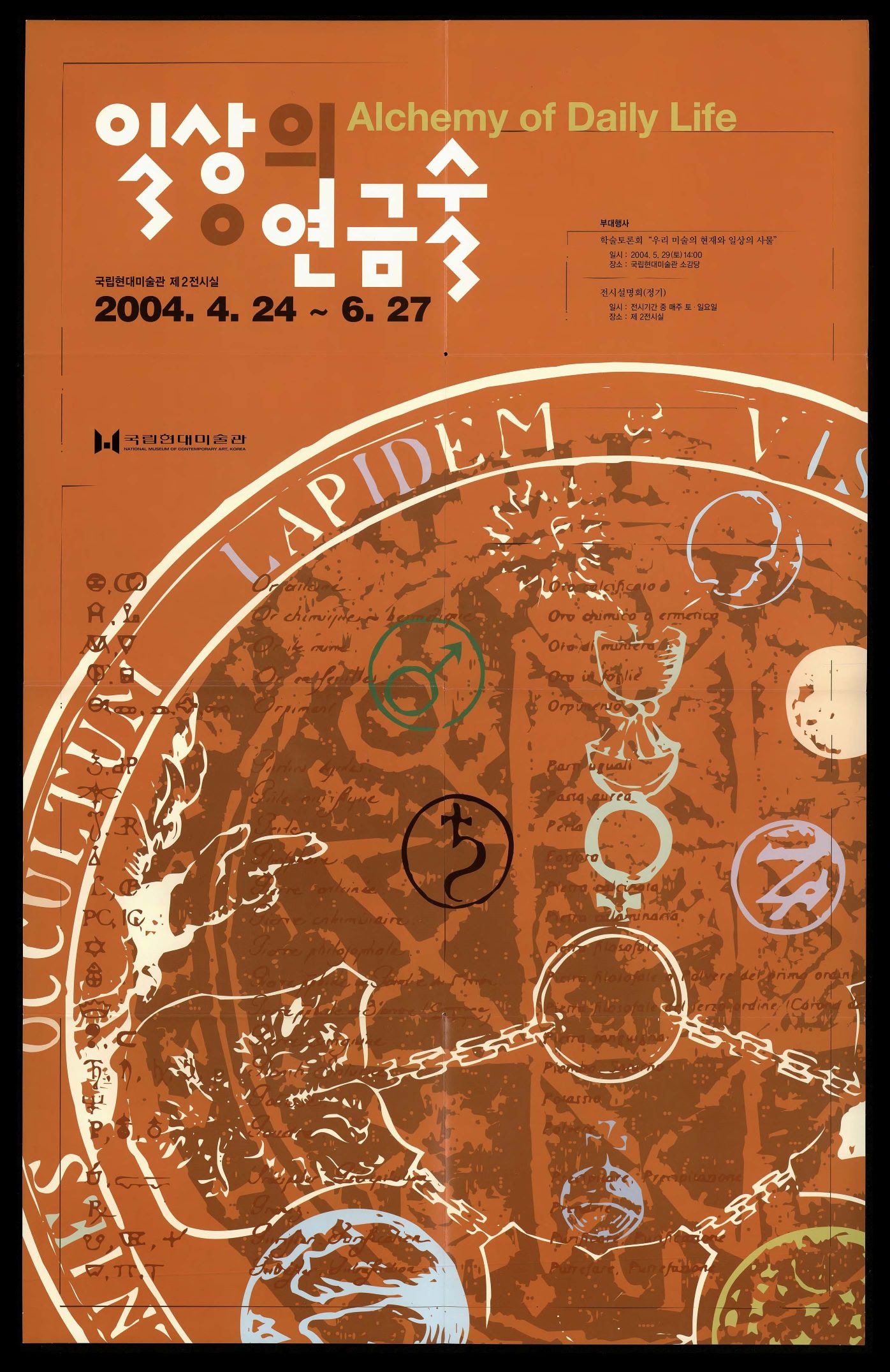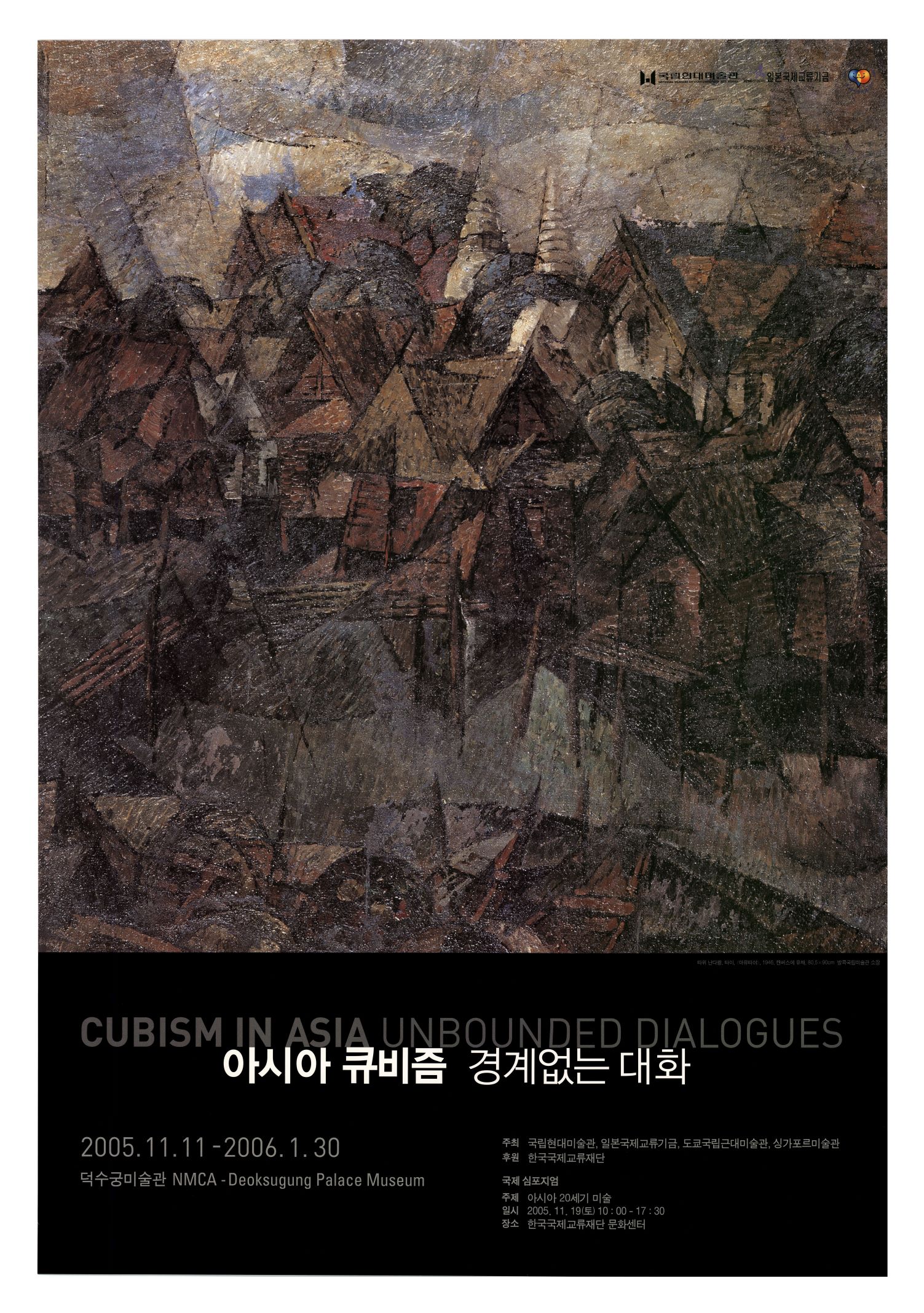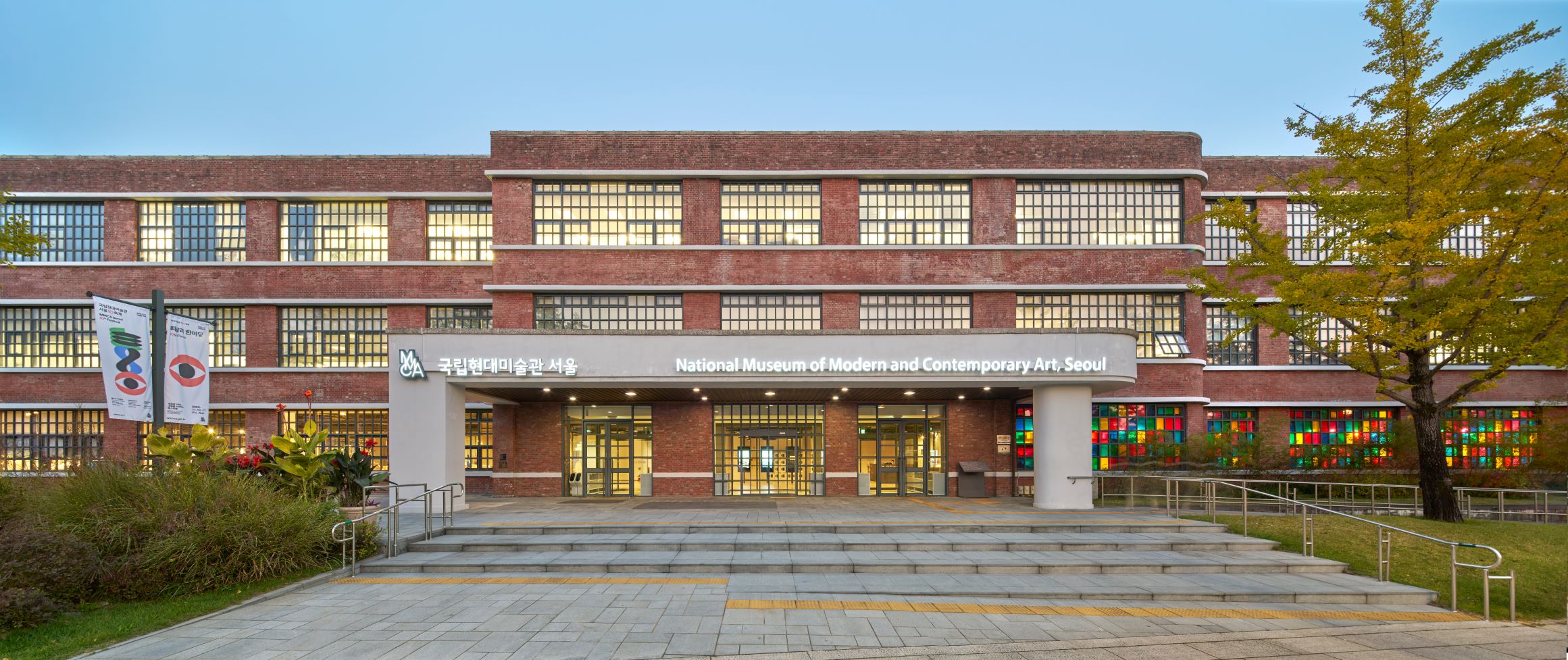
Alchemy of Daily Life, Leaflet, 2004, MMCA Art Research Center Collection
Alchemy of Daily Life
* Source: MMCA
Related
-

Cubism in Asia: Unbounded Dialogue
Cubism in Asia: Unbounded Dialogues was a touring exhibition co-organized by the National Museum of Contemporary Art, Korea (now MMCA); the Japan Foundation; the National Museum of Modern Art, Tokyo; and the Singapore Art Museum, and held in Japan, Korea, and Singapore between 2005 and 2006. Based on two years and three months of preparation and four joint field surveys, 113 works by seventy-six artists were lent from seventy-five collections in eleven countries in a selection of Asian modern paintings. The exhibition was jointly hosted by leading national museums from the three Asian countries— Korea, Japan, and Singapore. The exhibition was inaugurated at the National Museum of Modern Art, Tokyo (August 9 – October 2, 2005), Japan, and travelled to the MMCA (November 11, 2005 – January 30, 2006), and then to the Singapore Art Museum (February 18 –April 9, 2006). In Asia, Cubism was perceived as a visual revolution developed in the West and as an indicator of modern art. The exhibition therefore sought to find a common art historical agenda in Asian modern art by examining the process of the reception of Western modernity and modern transformation in each country through the lens of Cubism. The exhibition was organized into four parts, identifying Cubism as the driving force behind each country's distinctive modern art, as it collided and fused with indigenous art forms, traditions, and customs. The Part 1 was “On the Table,” which showed Cubist still life as a testing ground for new perspectives; Part 2 was “Cubism and Modernity,” which showed how Asian countries abandoned naturalistic painting in favor of Cubism with a strategic perspective; Part 3 was “Body,” which featured how the human body was identified as the material of modernity; and Part 4 was “Cubism and Nation,” which demonstrated how Asian traditions and customs were integrated with Cubism to express the orientation of the new era or the modernization of tradition. Korea contributed 15 works by 11 artists including Gu Bonung, Kim Kichang, Kim Sou, Kim Whanki, Park Rehyun, Park Youngseun, Byon Yeongwon, Chu Kyung, Ha Indoo, Han Mook, and Ham Daejung. The exhibition attempted to present Asian modern art as a history of subjective translation, rather than a mere recipient of Western art, through the development of Asian Cubism in the twentieth century and became an important reference for subsequent joint exhibitions, research, and collaborations between curators and museums on Asian modern art.
-

National Museum of Modern and Contemporary Art, Korea (MMCA)
A national museum established in 1969 that researches, collects, and exhibits modern and contemporary art. As of 2018, there are branches in Gwacheon, Deoksugung, Seoul, and Cheongju. When first established, the National Museum of Modern Art (now MMCA) was located within Gyeongbokgung palace. In 1973, the museum moved to the East Wing of the Deoksugung Seokjojeon building. Then, in 1986, the museum moved to its current location in Gwacheon, to occupy a new building equipped with an outdoor sculpture exhibition space, and has since opened a new chapter in Korean art. The perceived need for a space to focus specifically on Korean contemporary art led to the establishment of further site, the National Museum of Contemporary Art, Deoksugung in 1998. In November 2013, a further demand for contemporary art exhibitions led to the establishment of another Seoul branch being created in the Defense Security Command building in Sogyeok-dong, Jongno-gu, which has since its inception engaged in multifaceted exhibitions of both domestic and overseas contemporary art. Also, as a further component of the MMCA complex, a disused tobacco factory in Cheongju was remodeled to provide a home to the National Art Storage Center.
Find More
-

Korean Art 2003 REAL-SCAPE Revisited
Korean Art 2003: TRUE-SCAPE Revisited was a special exhibition held at the National Museum of Contemporary Art (now MMCA) from September 24 to November 11 in 2003. This exhibition was a part of the series of traditional painting and contemporary art exhibitions themed around Geumgangsan Mountain that had been held since the resumption of tourism to Geumgansan Mountain in 1998. The MMCA declared that the exhibition was intended to examine the seventeenth- and eighteenth-century “true-view” (jingyeong) landscape paintings of the late Joseon period as a distinctive tradition that demonstrates the national identity of Korean art and to explore how “the spirit of true-view” is inherited and developed in contemporary Korean art. The exhibition was organized into four subthemes of nature, scenery, landscape, and city, based on contemporary Korean artists’ artistic responses to and interpretations of their surroundings. Each subtheme was described through subtitles: nature as prototype, scenery as atmosphere, landscape as style, and city as environment. In addition to ink-and-wash landscape paintings, various types of art, including oil paintings, sculptures, media art, and installations, were exhibited, allowing contemporary Korean art of diverse genres to be examined through the concept of “true-view." The exhibition catalogue contained 195 works by sixty-two artists.
-

100 Years, Architecture of Korea
100 Years, Architecture of Korea was a special exhibition on the theme of modern and contemporary Korean architecture held at the National Museum of Contemporary Art, Korea (now MMCA) from August 31 to October 28 in 1999 under the auspices of the '99 Year of Architecture Organizing Committee. A total of 189 architects and architectural scholars participated in the exhibition, and over 350 works including blueprints, maps, architectural books, and archival photographs were exhibited, organized into three parts and twelve themes. Part 1, “The Involuntary Introduction of Western Culture and the Transformation of Korean Architecture,” consisted of five subtopics and the archival collection of architectural firms. The five topics included (1) The Impact of Modernization, (2) Heteronomous Modernization, (3) Autonomous Modernization, (4) Modernization of the Architectural World and Architectural Education, (5) Liberation and Architecture. With the opening of ports, efforts to actively adopt and establish Western architectural styles and systems, as well as efforts to receive modern architecture while rooted in traditional culture, were demonstrated in Part 1 through 35 works and models such as Chungdong Church, the rotary in front of the Bank of Korea, Hwashin Department Store, and the Gyeongseong Industrial Promotion Hall. Part 2 was composed under the theme of “The Pursuit of Fundamental Values of Architecture,” and had subtopics such as the Pursuit of Modernity, Exploration of Identity and Regionalism, Transformation of Housing Due to Urbanization, Pursuit of Rationality (Architecture as Making), Expression of Architectural Aesthetics, Exploration of Technological Aesthetics, Architectural Urban Context, Exploration of Architectural Space, and Internalization and Architecture. Covering the achievements of Korean architecture from the mid-1950s to the present, Part 2 examined the application of Western concepts of modernity and the movement of research on traditional Korean forms as modernization progressed after the Korean War. Furthermore, it presented the flow of Korean architectural history, focusing on the exploration of Korean traditional identity, urbanization and housing changes, and the diversification and internationalization of architecture, centered around the era of urbanization coinciding with the Seoul Olympics in 1988. Part 3 was titled “A New Way of Thinking for the Future" structured around the subthemes “Phenomena and Perception: Perception and Exploration of the New Era I” and “Reflection and Alternatives: Perception and Exploration of the New Era II.” The aim of Part 3 was to envision the future of Korean architecture by presenting models from emerging architects, who explore current and future issues through architectural knowledge and imagination, while inviting viewers to contemplate the future of Korean architecture. The exhibition utilized visual materials such as panels, models, slides, and videos to make architecture, which may be difficult for the public to understand, more accessible. In addition, time was set aside for conversations between the artists (architects) and visitors on weekend. Furthermore, a large-scale timeline measuring 22 meters was also on display, analyzing global architectural history, the current situation of Korean architecture, and contemporary Korean architectural structures. This attempt aimed to provide a comprehensive overview of modern Korean architectural history.






